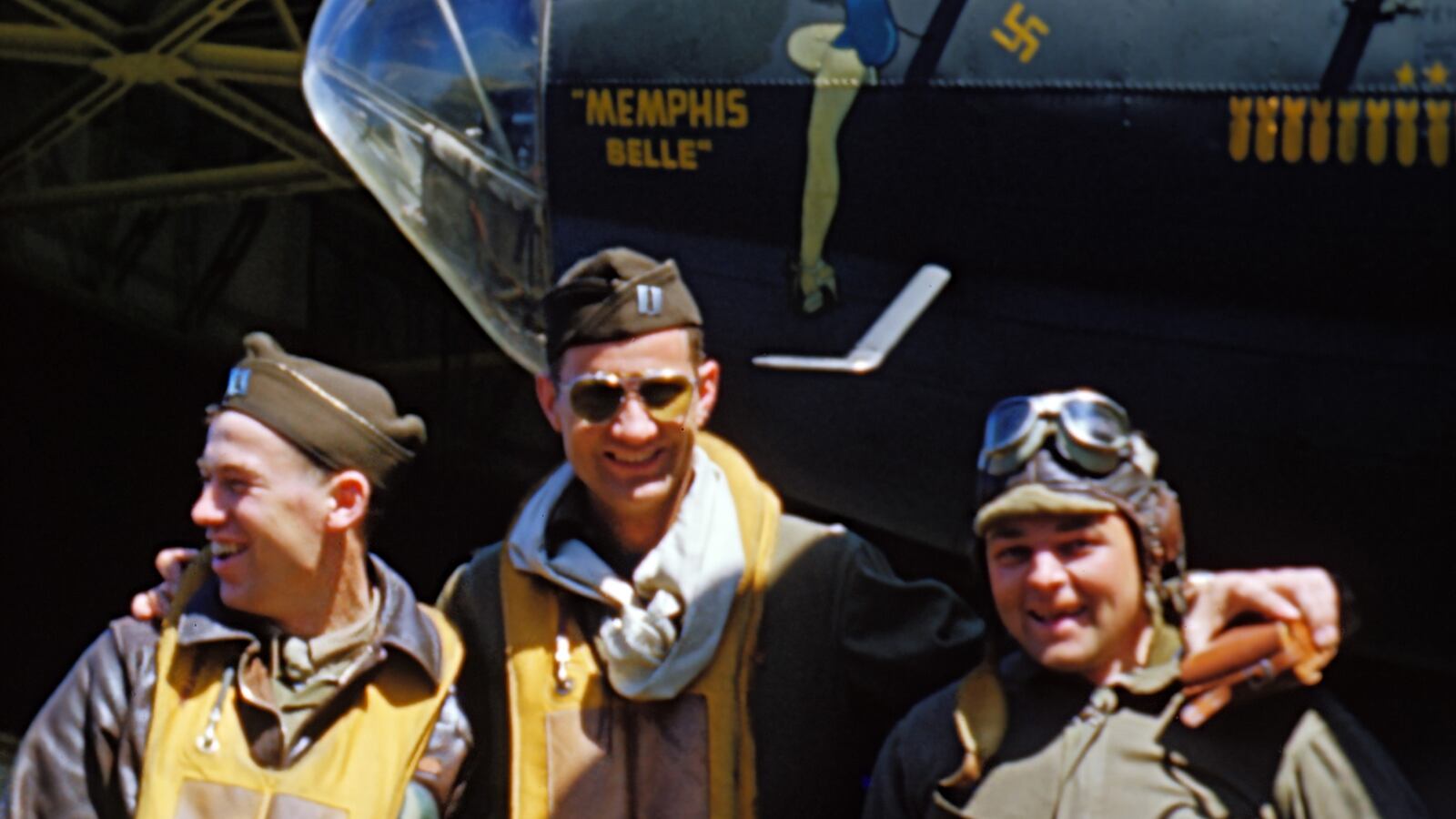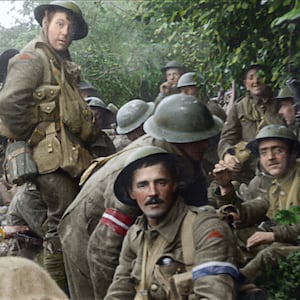Arriving on the heels of Peter Jackson’s They Shall Not Grow Old and Todd Douglas Miller’s Apollo 11, Erik Nelson’s The Cold Blue continues our current golden age of non-fiction restorations. An awe-inspiring snapshot of the Eighth Air Force squadrons that flew missions over Germany and occupied France in WWII, it’s a nostalgic tribute that doubles as a meditation on the traumatic cost of war, and the sacrifices that brave young men were called upon to make during those most perilous of times.
In the spring of 1943, William Wyler—having already directed Wuthering Heights and Mrs. Miniver, and destined to later helm The Best Years of Our Lives, Roman Holiday, Friendly Persuasion, Ben-Hur and Funny Girl—joined up with the military to fly with the Eighth Air Force’s B-17 bombers, the idea being to craft a film that would boost morale at home about the ongoing overseas campaign. The result was 1944’s The Memphis Belle: A Story of a Flying Fortress, a 45-minute documentary that was notable for its stunning 16mm color footage of servicemen on the ground and in the air, often engaged in life-or-death battle. Shot by three cinematographers, one of whom, Harold Tannenbaum, perished when his plane went down over France, it’s a thrilling up-close-and-personal record of military heroism.
Premiering on Thursday, June 6, on HBO, The Cold Blue is a companion piece to The Memphis Belle, culled from 15 hours of newly discovered color outtakes shot by the Oscar-winning Wyler. Restored to its full, vivid majesty, that material is nothing short of breathtaking, and though it boasts no sound, Nelson has, where applicable, dubbed in the rat-a-tat-tat of machine guns firing into the sky, the roar of engines upon takeoff, and the whistling of bombs as they plummet to their targets. From a purely experiential standpoint, his doc is transportive, bringing one into the cockpit of various B-17s as they embark on their runs through crystal clear blue skies—since, as one textual insert informs, Americans (unlike their British counterparts) always flew during the day.
The Cold Blue’s imagery is its nominal calling card, and its sights are apt to send shivers down one’s spine—including, most poignantly, its portraits of youthful faces. Nonetheless, just as crucial to these proceedings are a series of new interviews with nine Eighth Air Force veterans, whose recollections help guide the film along its narrative path. Now in their nineties, these speakers are the heart and soul of Nelson’s archival endeavor. They provide moving insights into what it was like to be a 19-year-old kid tasked with assuming such immense responsibilities, and facing down danger that was unpredictable and everywhere; the chances of surviving 25 missions or more were less than 25 percent, and more men ultimately died in WWII flying with the Eighth Air Force than did serving in the Marines.
“The odds are all against you. It’s more or less like being in a death row penitentiary, waiting on your turn, and you knew it was coming,” says one vet about his duty, which often involved flying a mission, returning to base and getting some much-needed rest, and then turning around and going back up again the following day. “Anybody says they weren’t afraid, they were full of crap,” laughs another speaker, “because you were always afraid of what was going to happen next.” To hammer home that point, Nelson cuts to shots of enemy fighters approaching, and men opening fire on them with enormous guns that, it’s later explained, were more or less useless when it came to actually striking their fast-moving targets.
In planes dubbed “Dame Satan,” “Old Bill,” “Hitler’s Gremlin” and “Memphis Belle” (replete with painted logos), these courageous men carried out their daring assignments, which often involved dropping enormous payloads to the ground below. The Cold Blue offers haunting visions of bombs falling in rows, the sun glistening on them as they find their intended marks and detonate in great plumes. The juxtaposition between beauty and death is everywhere, be it the black smoky explosions caused by German “flak” (enemy fire)—often making progress a seeming impossibility—or the grand white contrails streaming from the backs of the B-17s, a sight that turns downright poetic when director Nelson marries it to a vet getting choked up about a comrade who was killed in action on the very day his son was born.
“The war came and we went and did what they told us to do,” remarks a vet, his humility mirrored by another who pronounces, “I want it clearly known. I do not profess myself to be a hero. I was a pilot. The heroes are buried in England, Germany and France. The boys who didn’t make it. They were the heroes. I was just a normal pilot.” It’s a noble sentiment, but one refuted by The Cold Blue, which in its depiction of barracks life, preparations and airborne assaults conveys the enormous risk assumed by these fresh-faced Americans, barely old enough to be called men and yet asked to accomplish intensely-grave feats. As one voice proclaims over the credits, “I cannot say it much more eloquently: it was a hazardous profession.”
That it most certainly was, and not only because of the Germans. The B-17s were neither pressurized nor heated, and at 25,000 feet, temperatures could drop to 65 below zero (akin to being at the peak of Mount Everest), causing frostbite; in one terrifying anecdote, an airman recalls a co-pilot having his fingers amputated after his hand froze to the Plexiglas window. In those conditions, terror was pervasive (“It was rough, because any minute, you was gonna get hit”), and the only thought was completing the job at hand.
Nelson’s interweaving of rapturous old visuals and present-day testimonials is confident and precise, and by the time his film reaches its conclusion, in which these now-elderly vets watch Wyler’s restored footage in their homes, one feels as if they’ve actually gotten to know them, at least vis-à-vis their harrowing service. They may not imagine themselves as heroes, but The Cold Blue—an ode to their and many others’ valor, which can never be celebrated enough—most certainly marks them as such.







